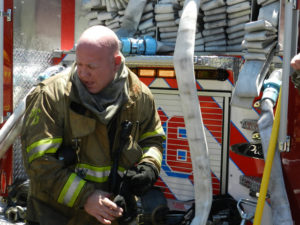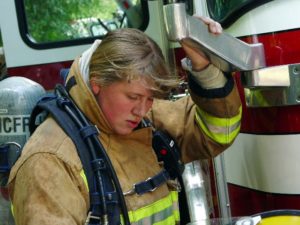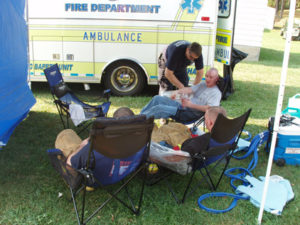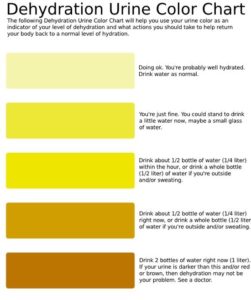 Firefighting operations—whether in suppression of an actual fire or during training exercises—enact a tremendous hyperthermic stress on the human body regardless of the time of year. However, the warmer temperatures of spring and summer significantly elevate that risk for firefighters.
Firefighting operations—whether in suppression of an actual fire or during training exercises—enact a tremendous hyperthermic stress on the human body regardless of the time of year. However, the warmer temperatures of spring and summer significantly elevate that risk for firefighters.
Prevention of dehydration and hyperthermia should be a key concern for both Incident Commanders in the field as well as Training Chiefs responsible for the safe training of both entry-level and incumbent firefighters. Good prevention, however, begins with proactive behaviors on the part of individual firefighters.
Individual Preparation
The following links from my fire service colleague and subject matter expert on firefighter health and wellness, Dr. Karlie Moore, Ph.D., contain a wealth of information that can aid firefighters in making sure they are prepared for the thermal stresses of firefighting.
Do you really need to drink 8 glasses of water per day? (Hydration series part 1 of 3)
How do firefighters and active people stay hydrated? Hydration series part 3 of 3
Firefighter Rehabilitation Policy
 The rehabilitation of firefighters should be a key operational objective for both actual fire combat and firefighter training operations. NFPA 1584: Standard on the Rehabilitation Process for Members During Emergency Operations and Training Exercises, should be the starting point for fire department leaders in developing safe, effective and efficient practices on the emergency scene and on the training grounds.
The rehabilitation of firefighters should be a key operational objective for both actual fire combat and firefighter training operations. NFPA 1584: Standard on the Rehabilitation Process for Members During Emergency Operations and Training Exercises, should be the starting point for fire department leaders in developing safe, effective and efficient practices on the emergency scene and on the training grounds.
U.S. Fire Administration’s publication, Emergency Incident Rehabilitation (February 2008) is a good base document for fire service leaders seeking to develop policies and procedures as well as training for their personnel on firefighter rehab practices.
The International Association of Fire Chiefs (IAFC) provides guidance for fire service leaders in developing a firefighter rehabilitation policy for emergency operations and during training activities in its publication, Firefighter Rehab: An Introduction to NFPA 1584 Firefighter Rehab (Establishing a Firefighter Rehabilitation Policy).
See Related: Sample SOG for Training Activities During Hot Weather
Departments need to be proactive
The need for fire suppression operations doesn’t “take a break” during warmer weather, nor does the  need to train firefighters to prepare them for fire combat. Proactive fire service leaders have recognized this fact and have taken the necessary steps to create good policies and procedures for their personnel. They’ve also taken the necessary actions to ensure that personnel comply with those policies and procedures (Always a key distinction!).
need to train firefighters to prepare them for fire combat. Proactive fire service leaders have recognized this fact and have taken the necessary steps to create good policies and procedures for their personnel. They’ve also taken the necessary actions to ensure that personnel comply with those policies and procedures (Always a key distinction!).
So, how has your department prepared for firefighting during warm and hot weather conditions?
 Fire & EMS Leader Pro The job of old firefighters is to teach young firefighters how to become old firefighters!
Fire & EMS Leader Pro The job of old firefighters is to teach young firefighters how to become old firefighters!
